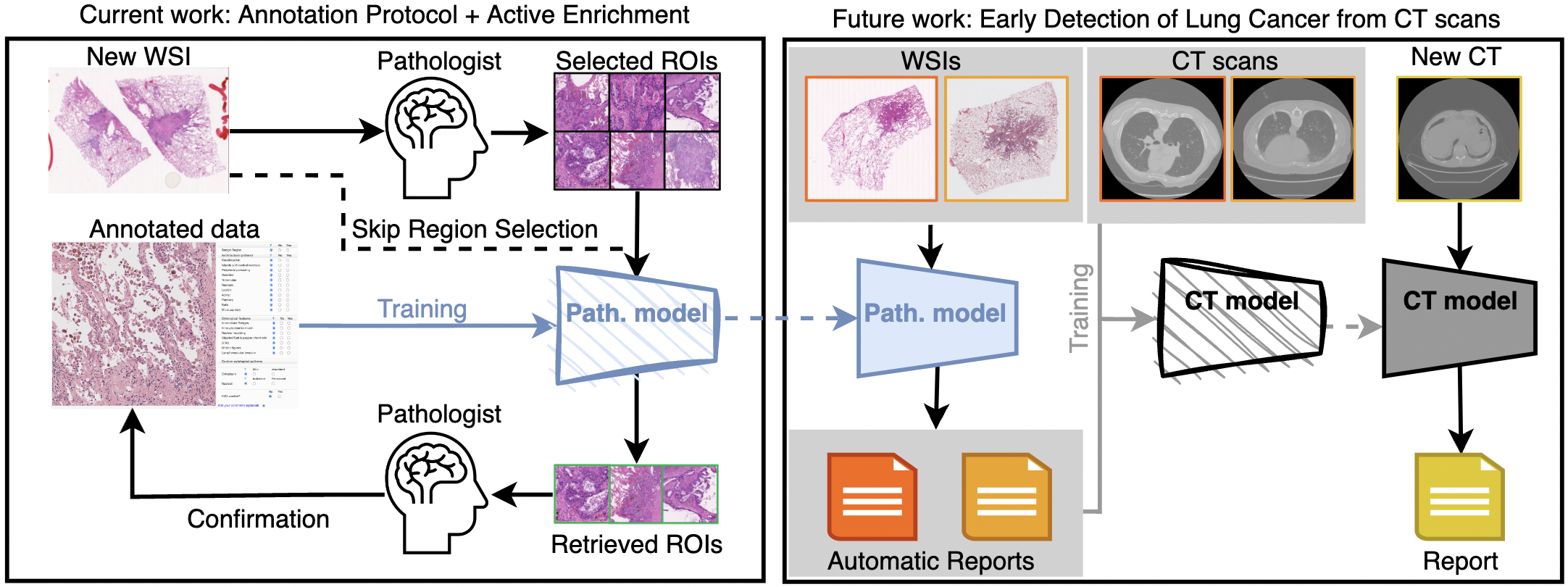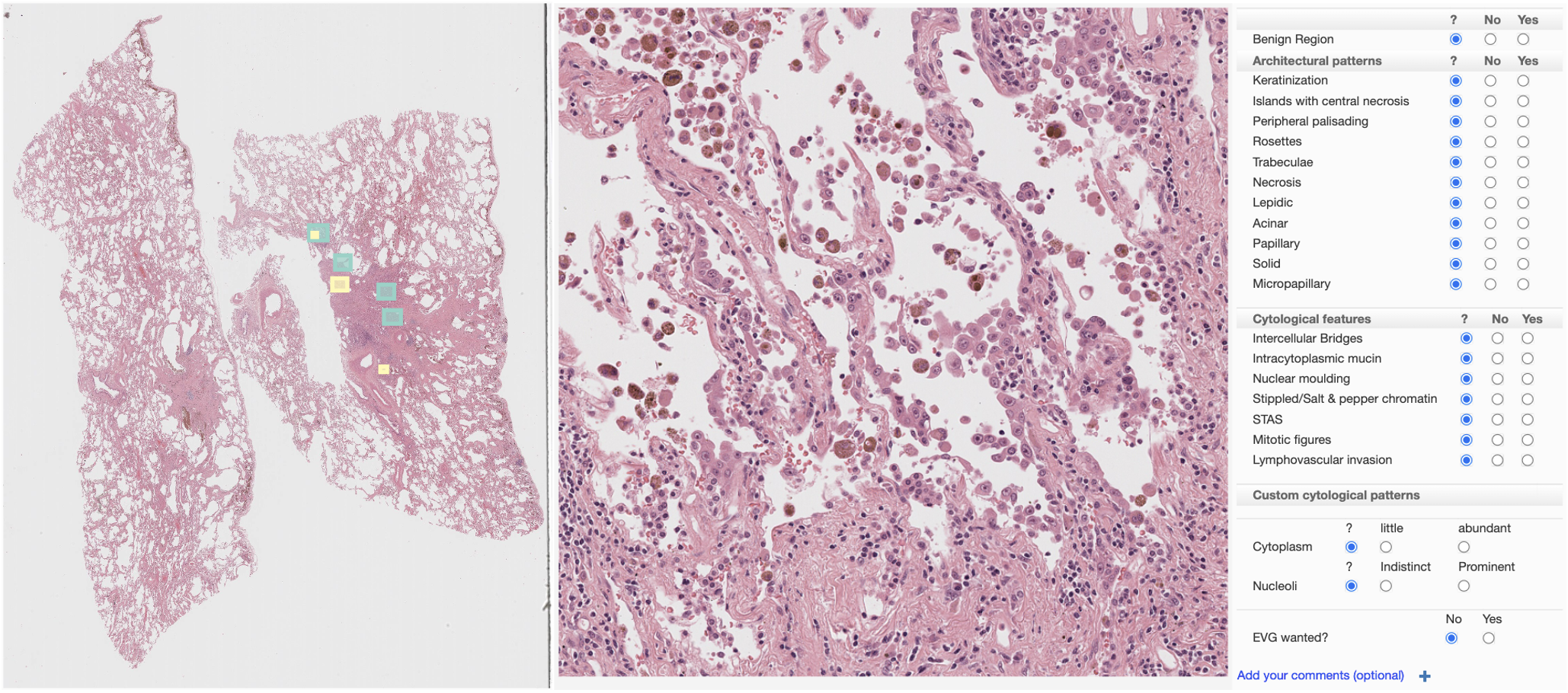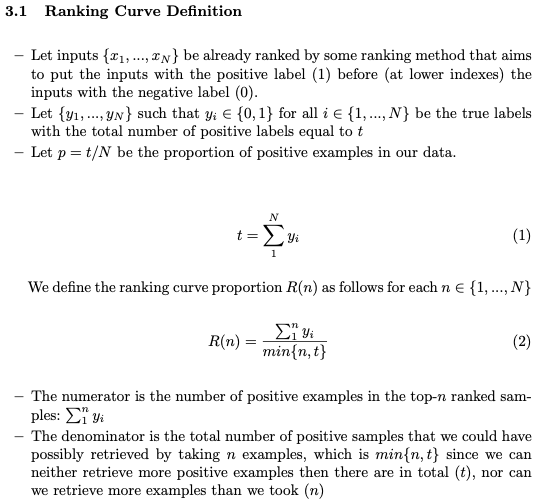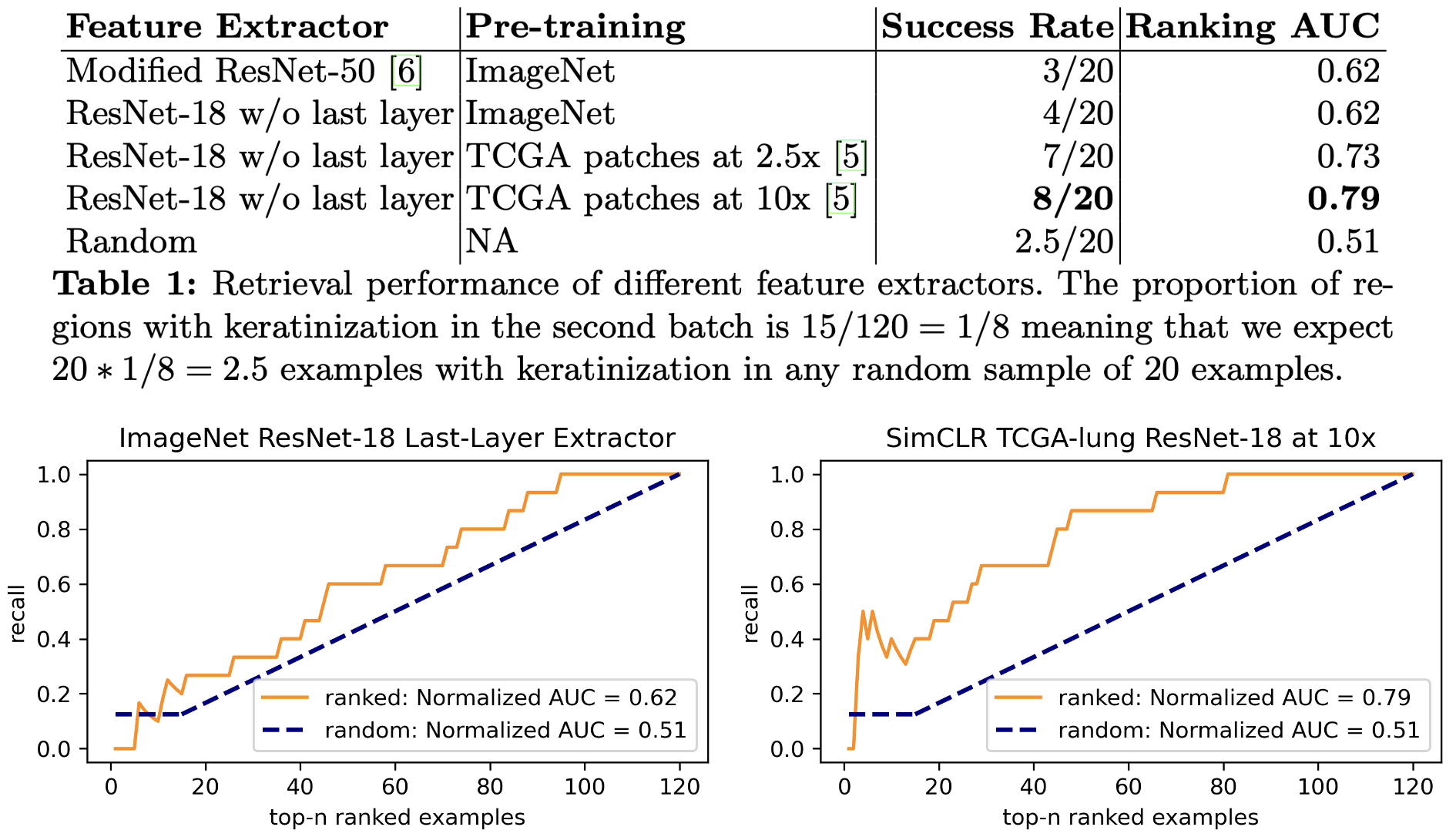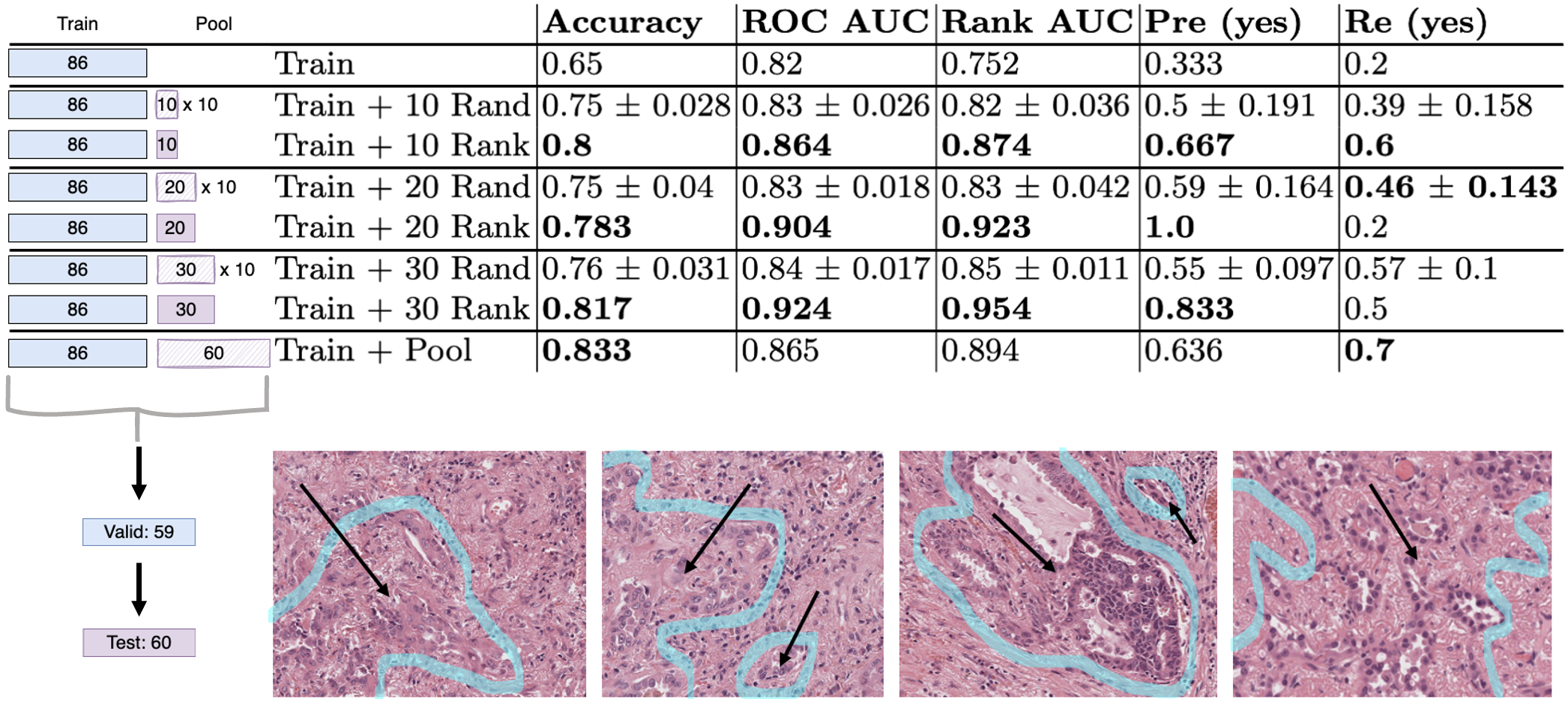- Published version: paper, supplementary material
- Pre-review pdfs (original submission): paper, supplementary material. This version of the contribution has been accepted for publication, after peer review but is not the Version of Record and does not reflect post-acceptance improvements, or any corrections. The Version of Record is available online at: http://dx.doi.org/10.1007/978-3-031-17979-2_12. Use of this Accepted Version is subject to the publisher’s Accepted Manuscript terms of use https://www.springernature.com/gp/open-research/policies/accepted-manuscript-terms
- The paper, has been published as part of the CaPTion workshop at MICCAI 2022.
- The work was presented in Singapore on the 22nd of September 2022.
- This work was done as part of the DART Lung Health Project
- Proposed a comprehensive annotation protocol for lung cancer pathology
- Proposed a new ranking metric for comparing image retrieval methods
- Fine-tuned ResNet for predicting pattern presence on regions from pathology images
Together with my colleagues at we are collecting a dataset (as part of the DART Lung Health Project) that will help us find new clinically-relevant features on chest CT images that can potentially allow to reduce the number of invasive procedures and help preventing cancer by detecting it earlier.
First, we aim to train a model that would mimic the diagnosis process pathologists follow when reviewing histology slides (which is the focus of the current work). Then, we aim to use the predictions from histology images in a combination with the corresponding chest CTs in order to find new relevant features on these CT scans.
To achieve the goal of the overarching project we developed a comprehensive lung cancer pathology annotation protocol that closely mimics the pathologist workflow. First, the pathologist is asked to select enough regions relevant to make the diagnosis. Second, the pathologist annotates these regions marking the presense and abscence of the morphological patterns outlined in the WHO 2021 guidelines for lung cancers.
As our data collection is ongoing we do not know how many annotated datasets can be generated. Hence we propose a metric to measure the retrieval performance for variable number of examples: Ranking Curve AUC. Our metric is similar to ROC AUC used for measuring classification performance.
Here we provide the formal definition. See supplementary material (or the pdf with pre-review supplementary material if you do not have access to the former option).
For one of the patterns (keratinization), we only had 1 example in the first batch of annotated images. Hense, we used unsupervised retrieval to rank the pre-selected regions from the second batch. With the feature extractor pre-trained on patches from TCGA lung extracted at 10x, we can retrieve 2/3 (10/15) regions with keratinizations from only 1/3 (40/10) ranked regions.
For acinar pattern, we simulated the process of adding ranked or randon images from the "pool" set into the training set. The conclusion is that adding 10 ranked images results in greater improvements to the model performance on the unseen test set than adding 10, 20, or 30 random images.
The 4 regions shown, contain acinar pattern. They were picked from the top-10 ranked pool set examples returned by our method for acinar pattern. Solid arrows point at areas confirmed and delineated by the pathologist to contain acinar pattern, thus validating the results.
George Batchkala is supported by Fergus Gleeson and the EPSRC Center for Doctoral Training in Health Data Science (EP/S02428X/1). Tapabrata Chakraborti is supported by Linacre College, Oxford. The work was done as part of DART Lung Health Program (UKRI grant 40255).
The computational aspects of this research were supported by the Wellcome Trust Core Award Grant Number 203141/Z/16/Z and the NIHR Oxford BRC. The views expressed are those of the author(s) and not necessarily those of the NHS, the NIHR or the Department of Health.
@InProceedings{10.1007/978-3-031-17979-2_12,
title="Active Data Enrichment by Learning What to Annotate in Digital Pathology",
author="Batchkala, George
and Chakraborti, Tapabrata
and McCole, Mark
and Gleeson, Fergus
and Rittscher, Jens",
editor="Ali, Sharib
and van der Sommen, Fons
and Papie{\.{z}}, Bart{\l}omiej W{\l}adys{\l}aw
and van Eijnatten, Maureen
and Jin, Yueming
and Kolenbrander, Iris",
booktitle="Cancer Prevention Through Early Detection",
year="2022",
publisher="Springer Nature Switzerland",
address="Cham",
pages="118--127",
isbn="978-3-031-17979-2"
}
